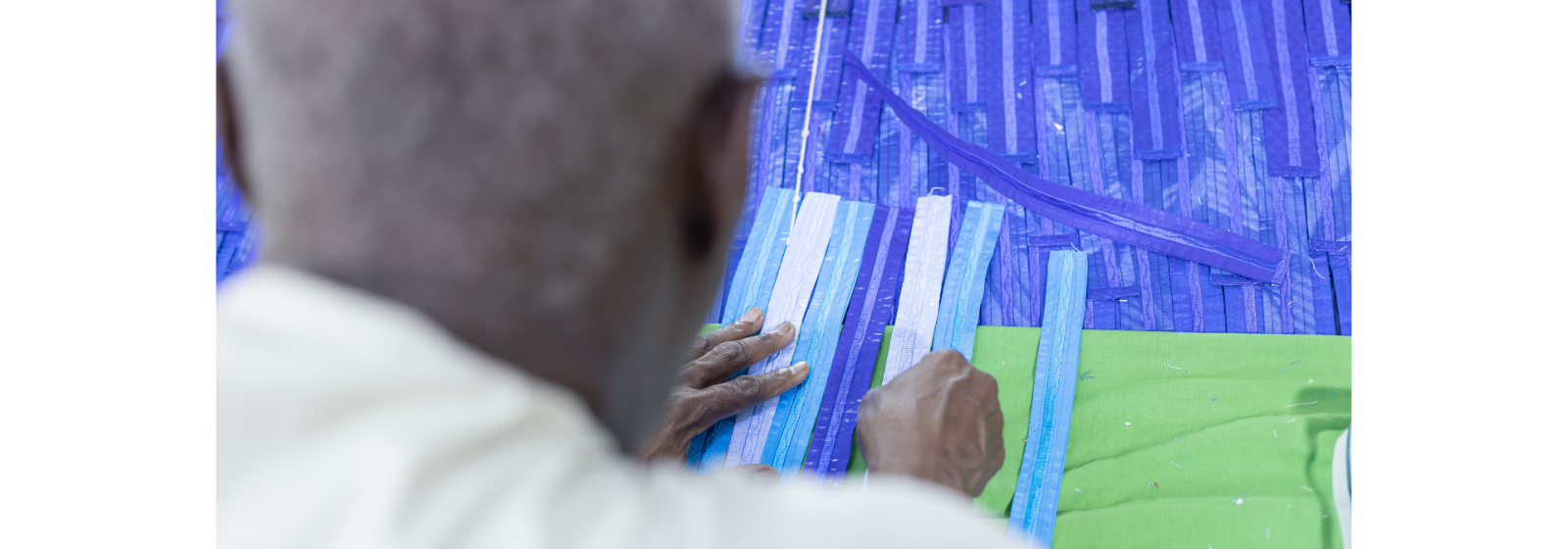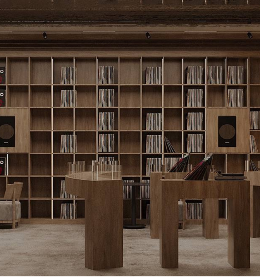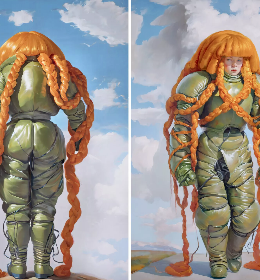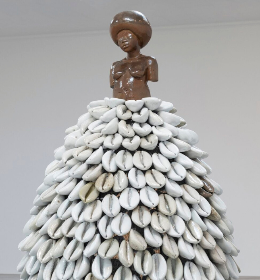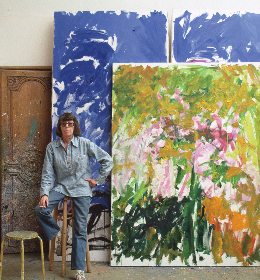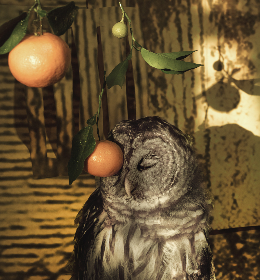Your work, which is very political, is intended more as a personal testimony or an invitation to explore a culture?
It’s true that, in my artistic practice, the boundary between the political and the social spheres is often difficult to separate, but for me, it’s primarily social. It addresses human suffering, and my personal commitment is to see how to influence mentalities and promote cultural tolerance within society.

Abdoulaye Konaté pictured in front of Source de lumière (Soleil) Motif d’Arabie sur Fond Ocre, 2024. Courtesy of Efie Gallery and Desire Ameka.
A work inspired by the song Le Jeune Chansonnier du Mali by Ali Farka Touré is at the heart of the exhibition.
Ali Farka, may his soul rest in peace, was a musician I knew well, a friend of my older brother. He would regularly come to Diré, where I was born, to rehearse with my brother. This song is inspired by a Peuhl epic, as I mentioned in other interviews, and it primarily speaks of bravery and human labour. This song inspires me particularly in terms of the landscape, as we are almost in the same geographical zone, the Sahel, which is a very beautiful environment during sunset but also a place symbolising hard work, which is almost desert-like. It is the transition between the desert and the tropical environment, where the inhabitants must make great efforts to survive.

Courtesy of Efie Gallery and Moz Photography.
The analysis of the colours used in a culture and a geographical area is central to your work. Can you tell us more about the works presented in Dubai?
A lot of the time, I observe people's geosocial attire, their textile work, and their way of dressing. Clothing plays a significant cultural role, especially in terms of religion. In the Emirates and the Sahel region, religion, light, and aesthetics play important roles in our culture. And these are some of the elements I am exploring in my recent work, drawing from my observations conceptually and translating them into pieces aesthetically.
And what are the links between the West African and Middle Eastern cultures?
Historically, West Africa has been influenced by the Middle East due to the occupation of this area. Religiously, we have been immersed in Arab culture. However, those who participated in these exchanges also brought a part of our culture to the Arab world, creating an exchange between these two geographical areas, which has made it easier for us to understand Middle Eastern culture.

Abdoulaye Konaté pictured in the studio.Courtesy of Efie Gallery and Desire Ameka.
How is your studio organised?
I have been working with a team for about twenty years. We usually have six members, but depending on the size or urgency of the work, we can expand to up to eleven people. We generally work with people who do simple sewing, embroidered sewing, and hand sewing. We have a number of machines in the workshop, and we don’t work on easels; we start our work on the floor. I have completely reversed the working method I learnt at the School of Fine Arts to adapt to floor work, which many artists have done, but the particularity is that 80% of my work is done on the ground.

Abdoulaye Konaté pictured in the studio.Courtesy of Efie Gallery and Desire Ameka.
‘Sambadio: Abdoulaye Konaté’
On view until 6th January 2025
Efiɛ Gallery, Dubai
Cover image: Abdoulaye Konaté pictured in the studio.Courtesy of Efie Gallery and Desire Ameka.




